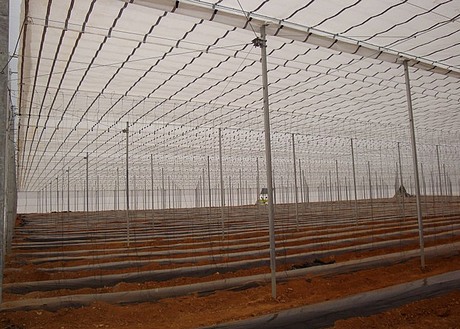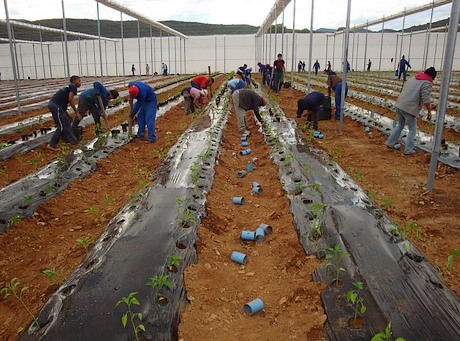
The crew at Rietvlei build the construction themselves and are currently busy with planting the first green bell pepper crop. "Next to this we also grow some new special varieties," said Pieter Hugo from Rietvlei. "We are a little bit later with the transplanting then planned. The plants are a little bigger then we wanted, due to a delay of the construction work. It was a bit hard to create good planting holes in the soil, but we made some tools from plastic pipes to do the job."
The retractable greenhouse roof and sides are automatically operated with a climate computer. "The computer is controlling the greenhouse automatic, when it rains it automatically closes. Or when it is windy, too cold or any other negative weather conditions are expected, the greenhouse automatically closes."

Right now it is mid winter in South Africa. Rietvlei is hoping to harvest the first crop in three months. "Unfortunately the plants are already quite big and there is already a small amount of fruit on the plants. But we will take these out first. We first want to trellis the crop much higher in the supporting wires and tomato twine."
According to Rietvlei, the very weak South African Rand has caused this experiment to be extremely costly, as this structure was imported from Canada, but the management is convinced that their investment will still pay off within a few years, as damage to crops in the harsh weather of the Little Karoo normally takes its annual toll at quite a substantial price.
